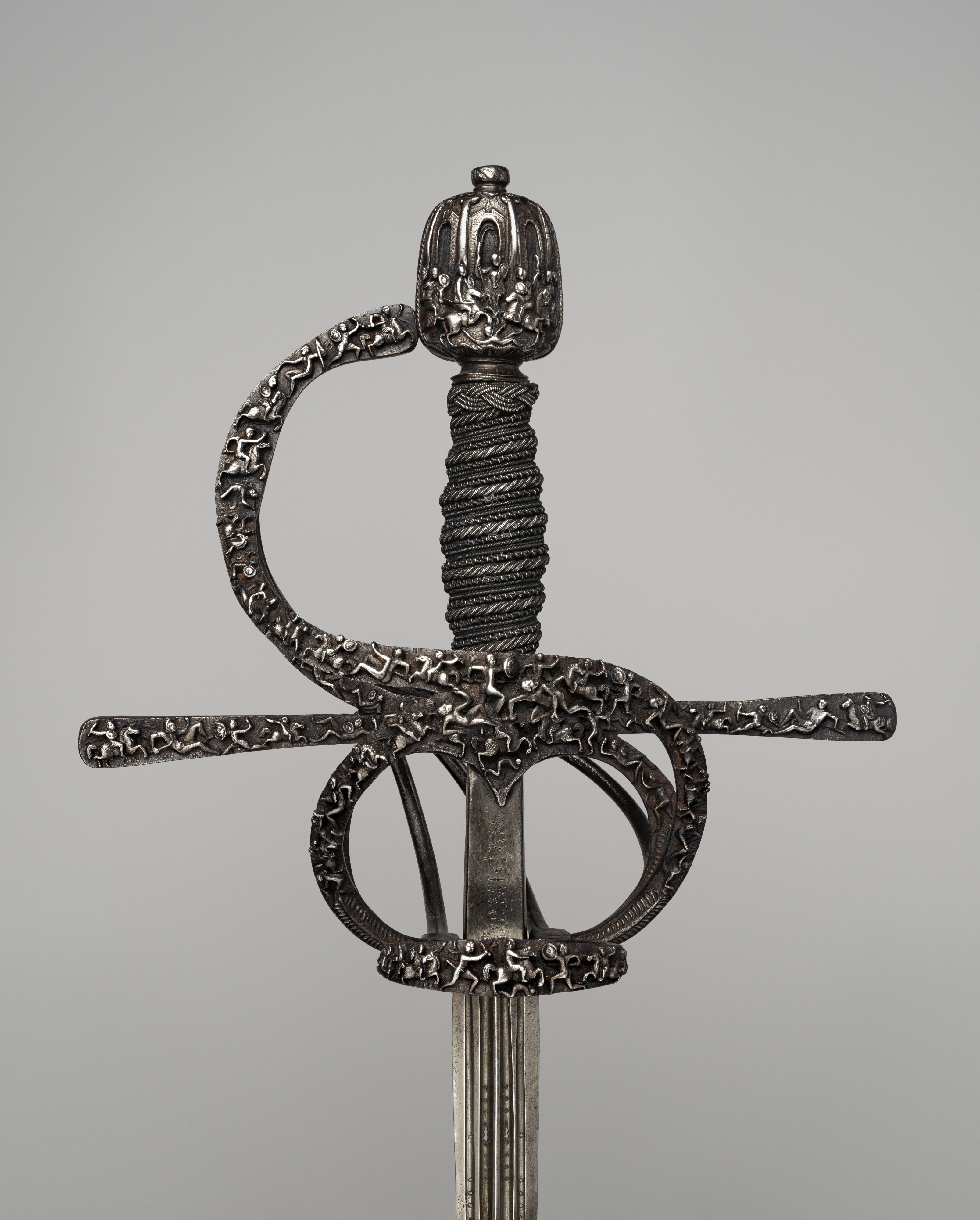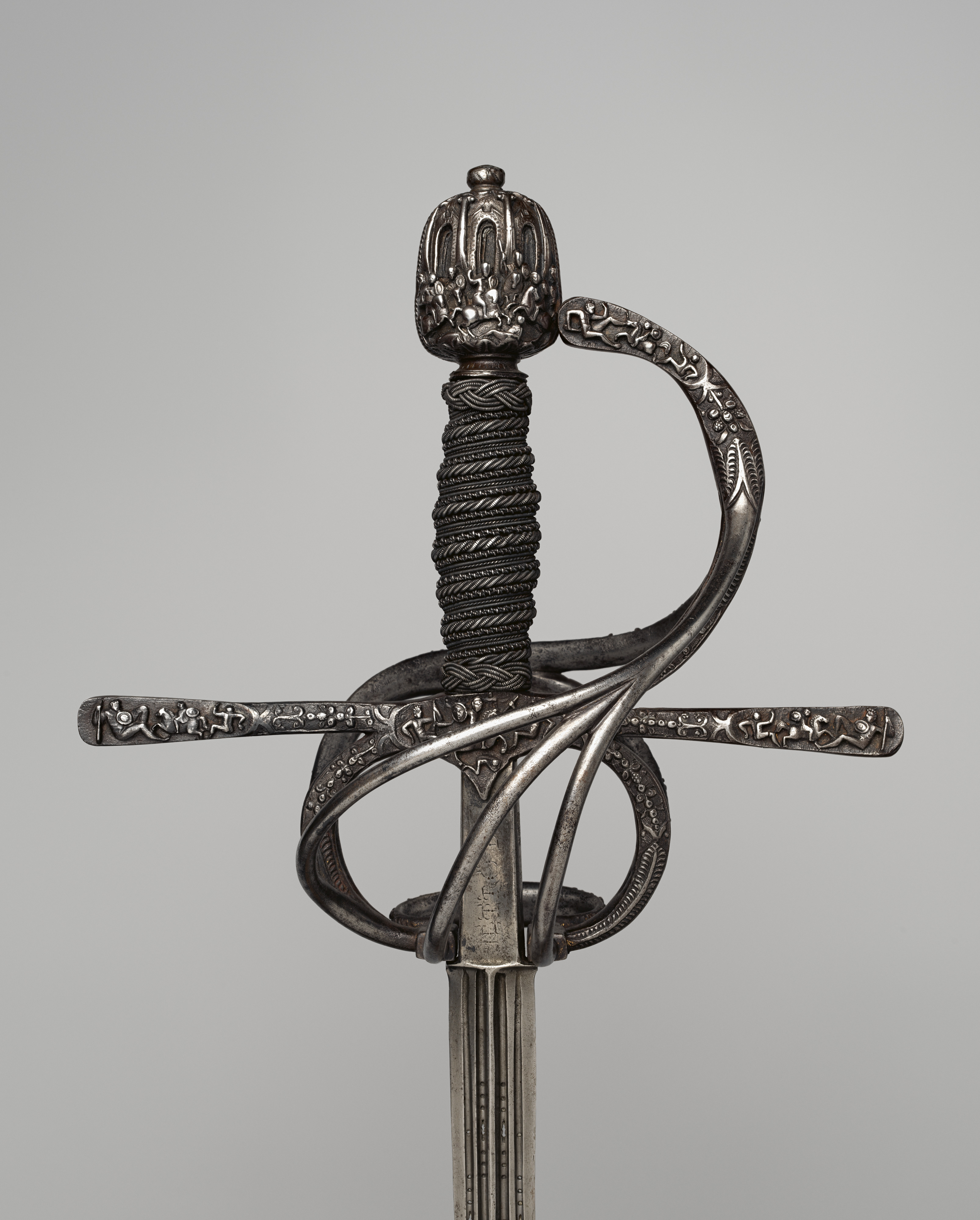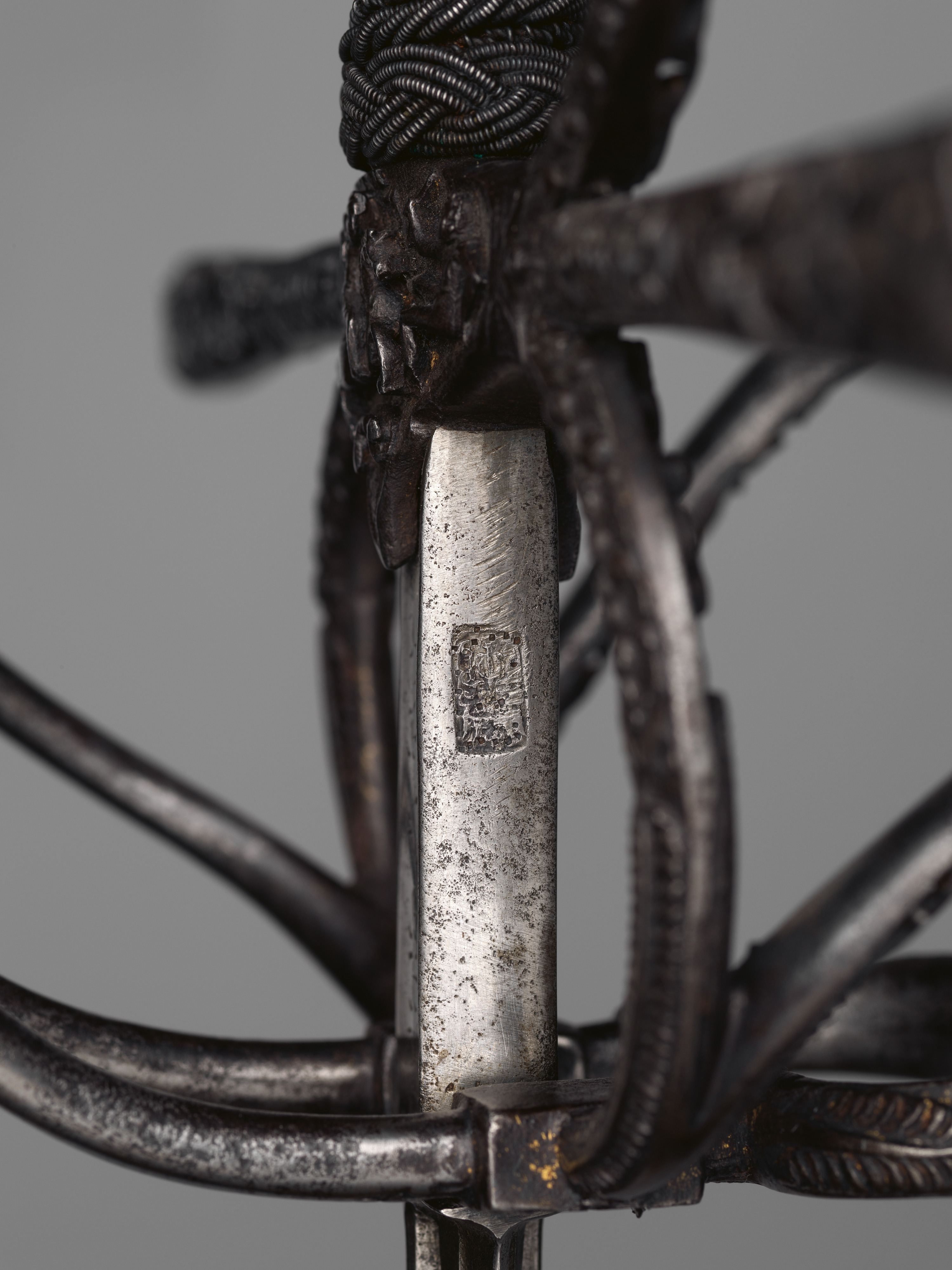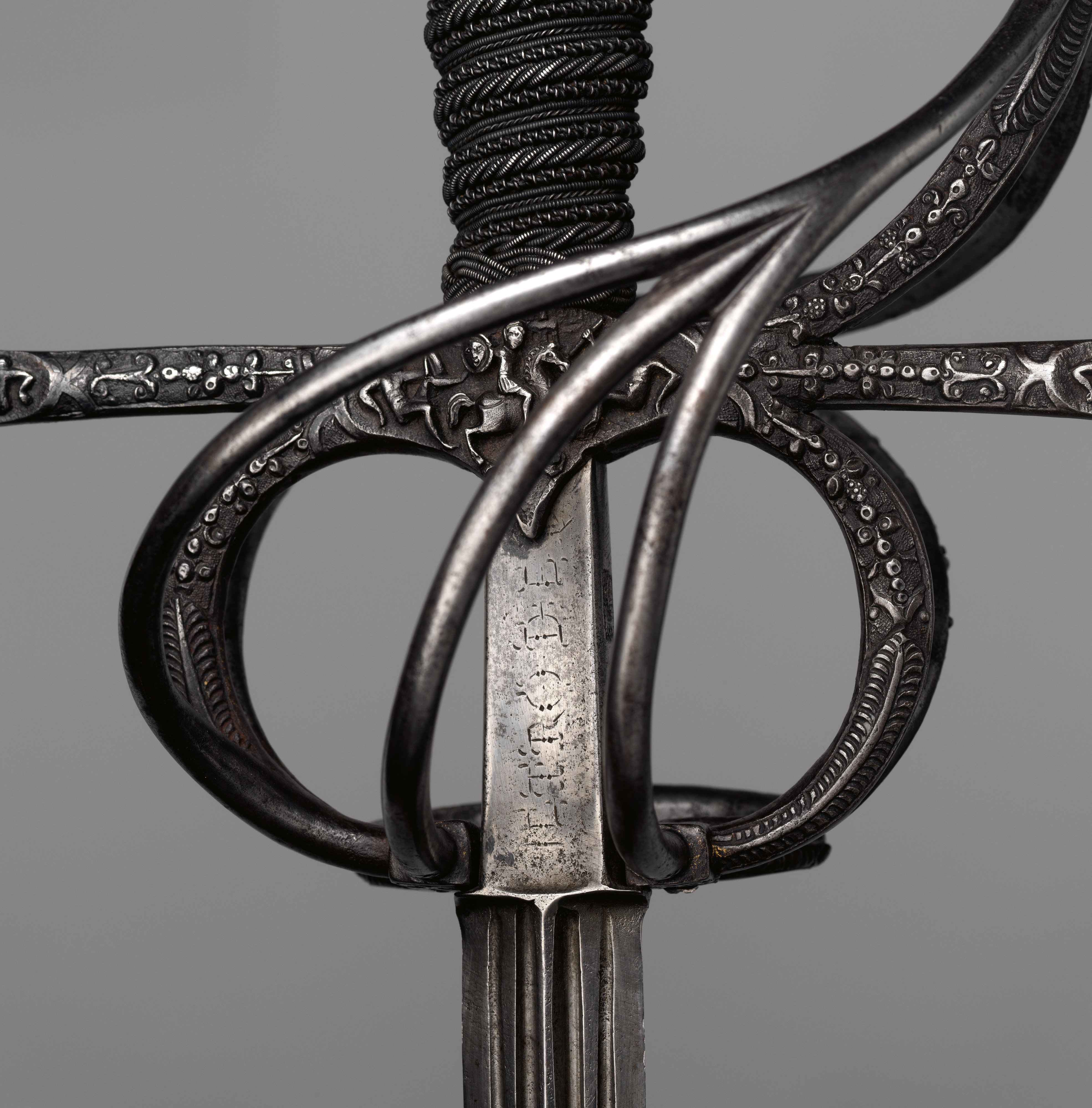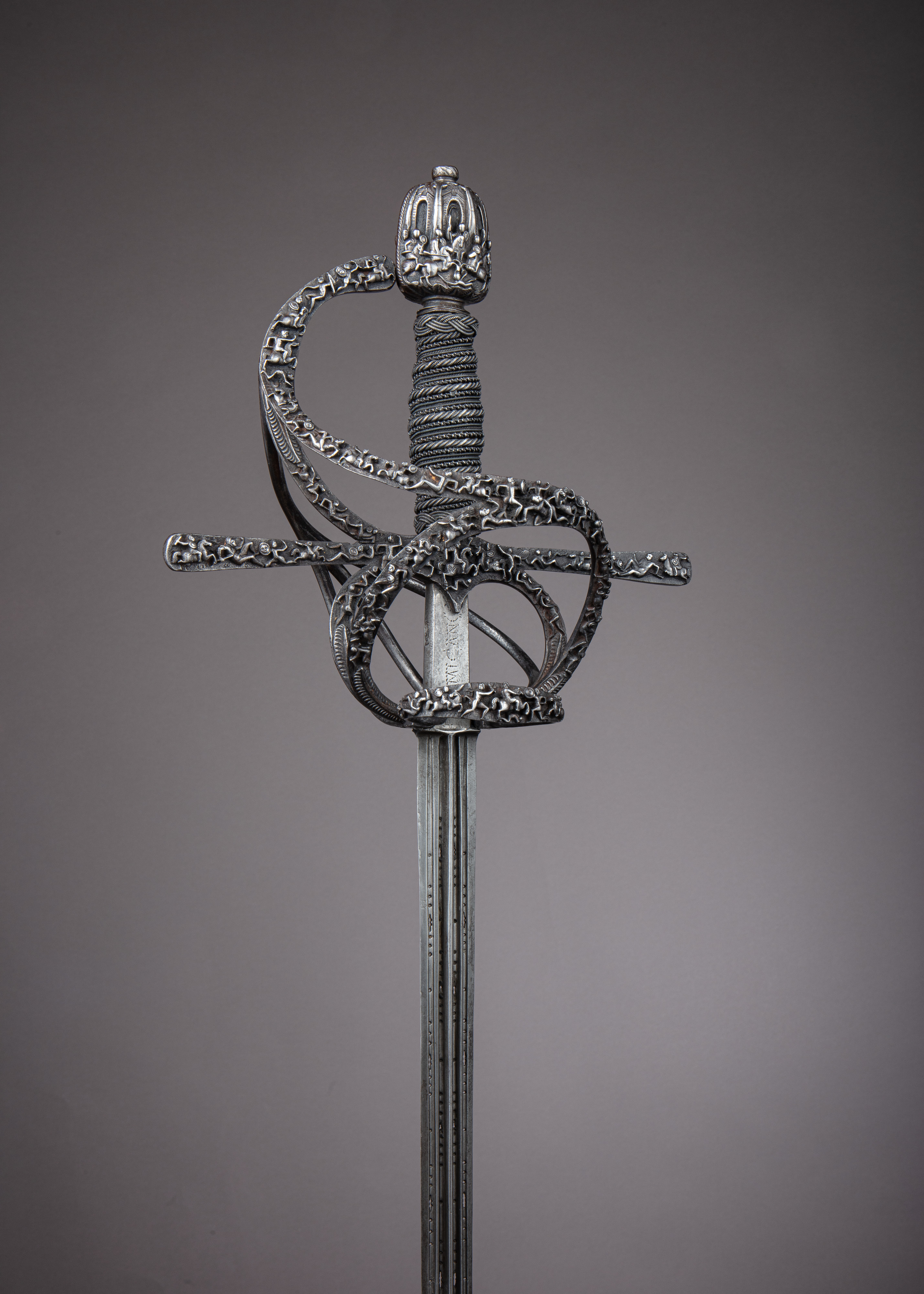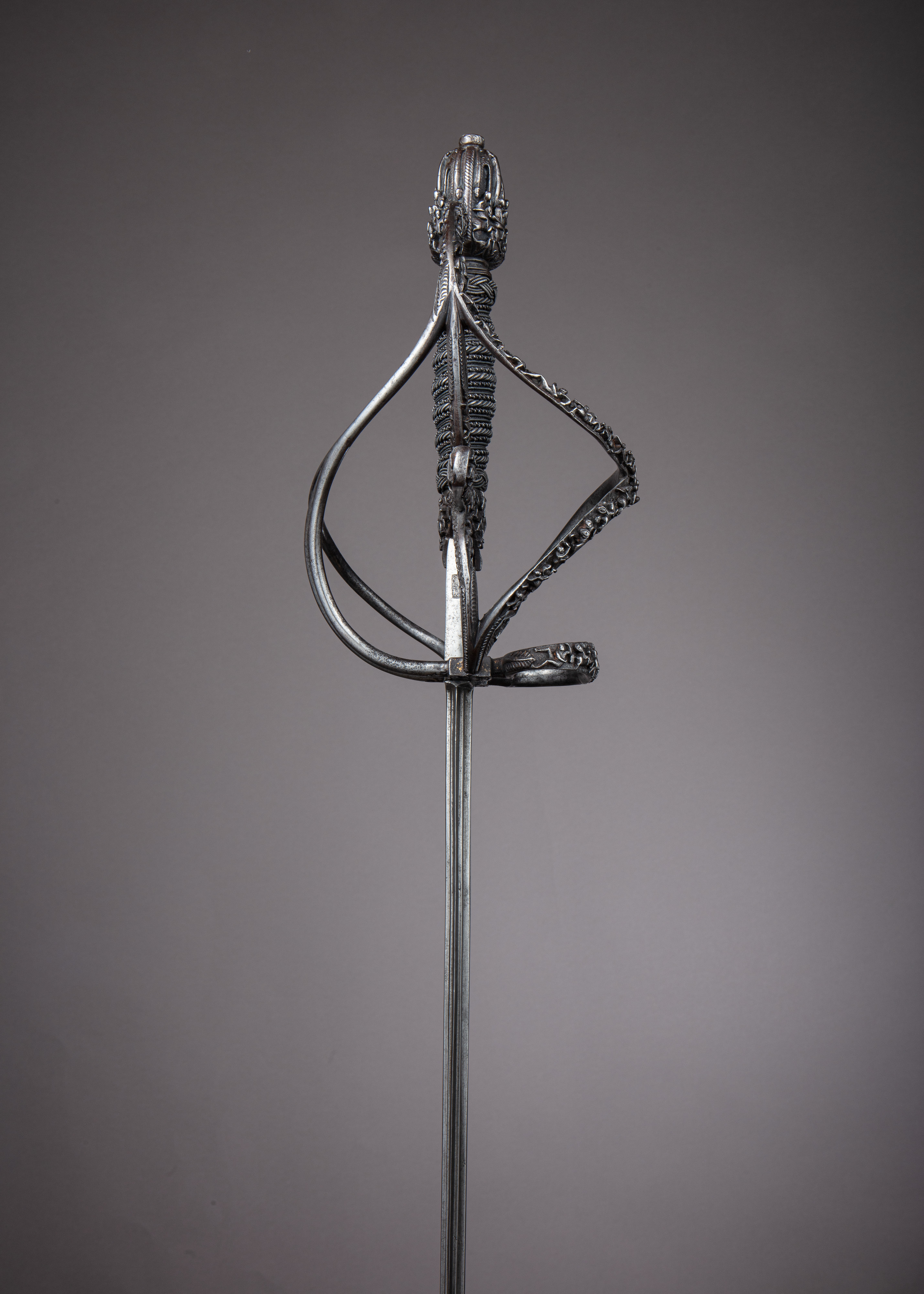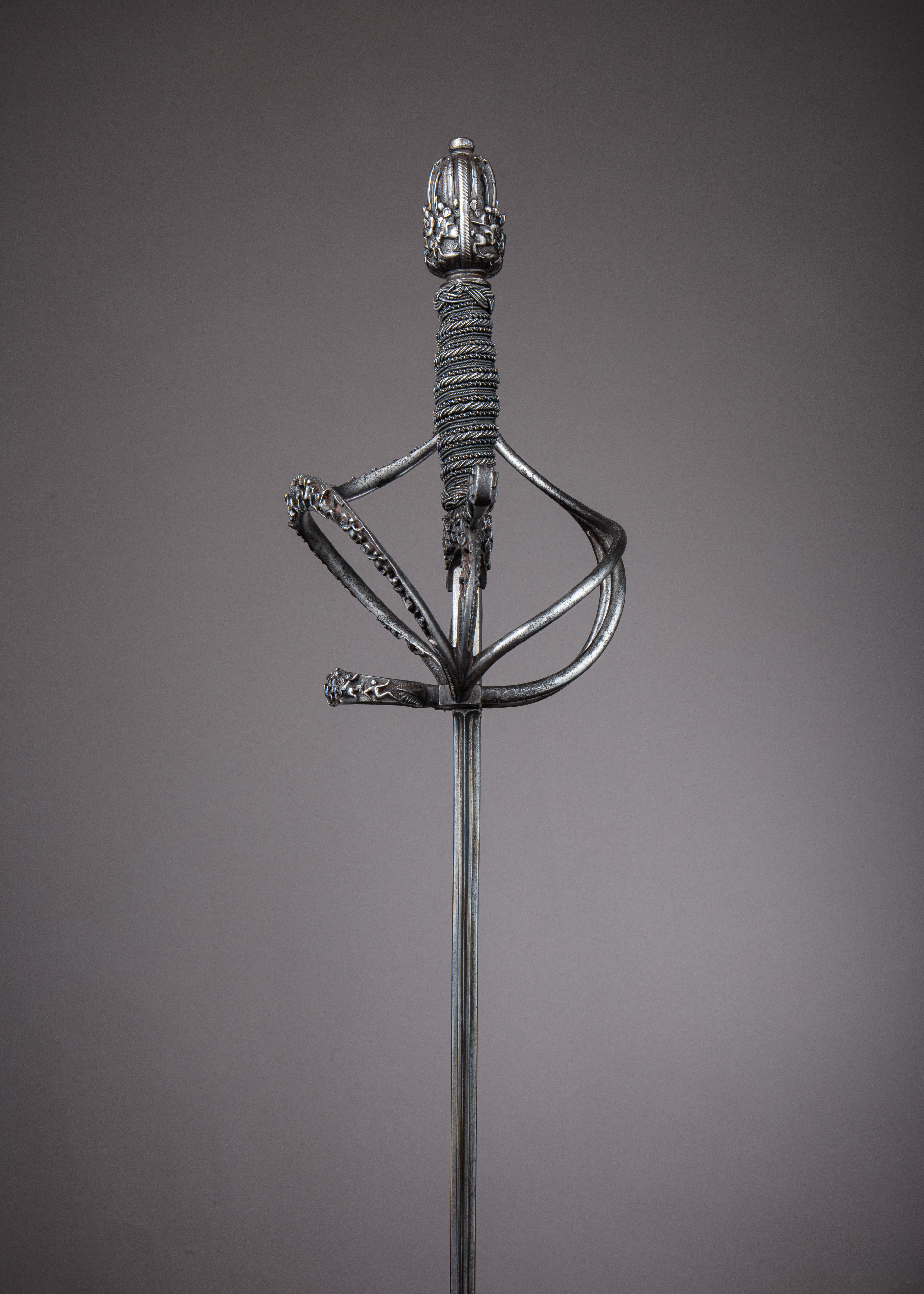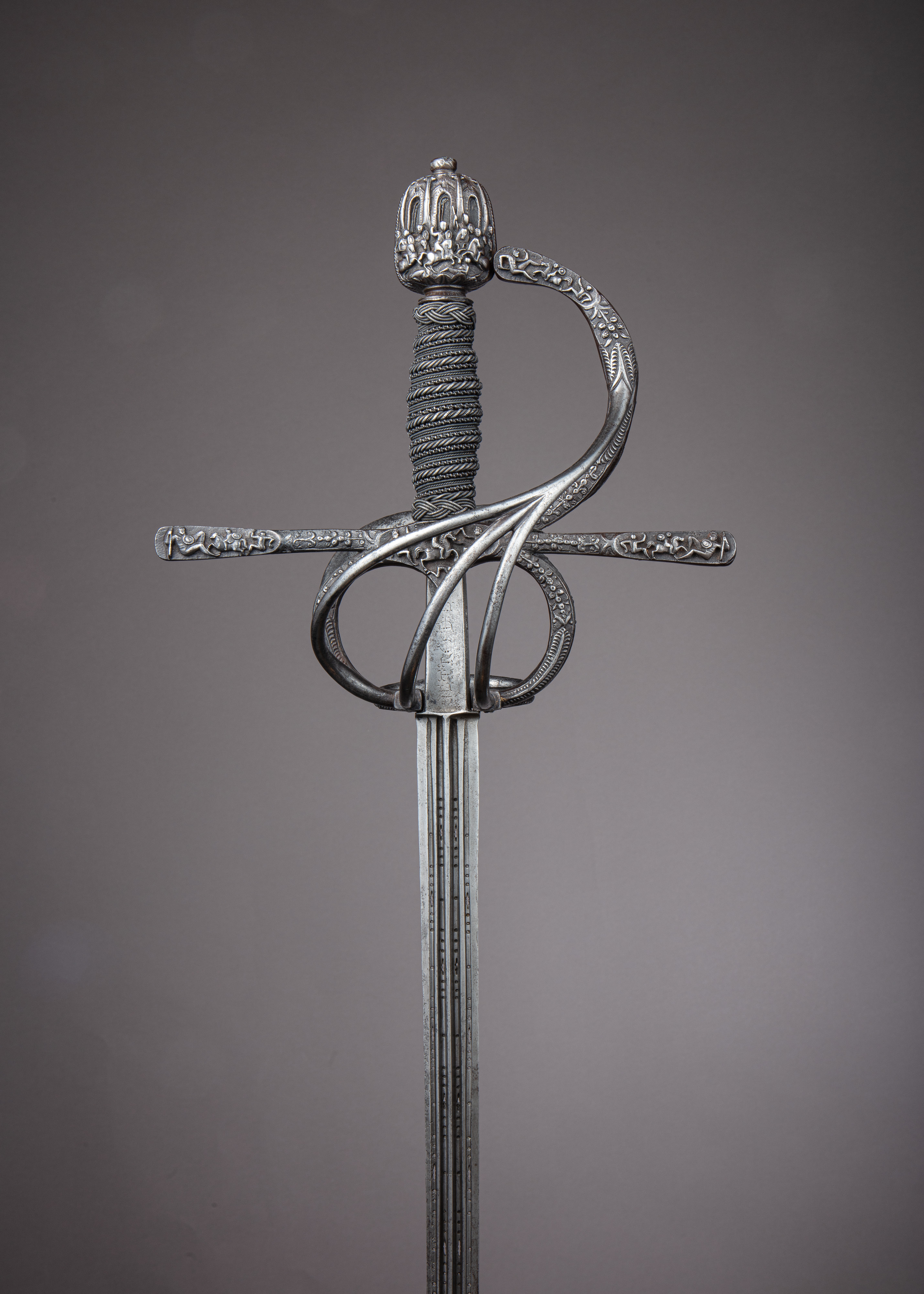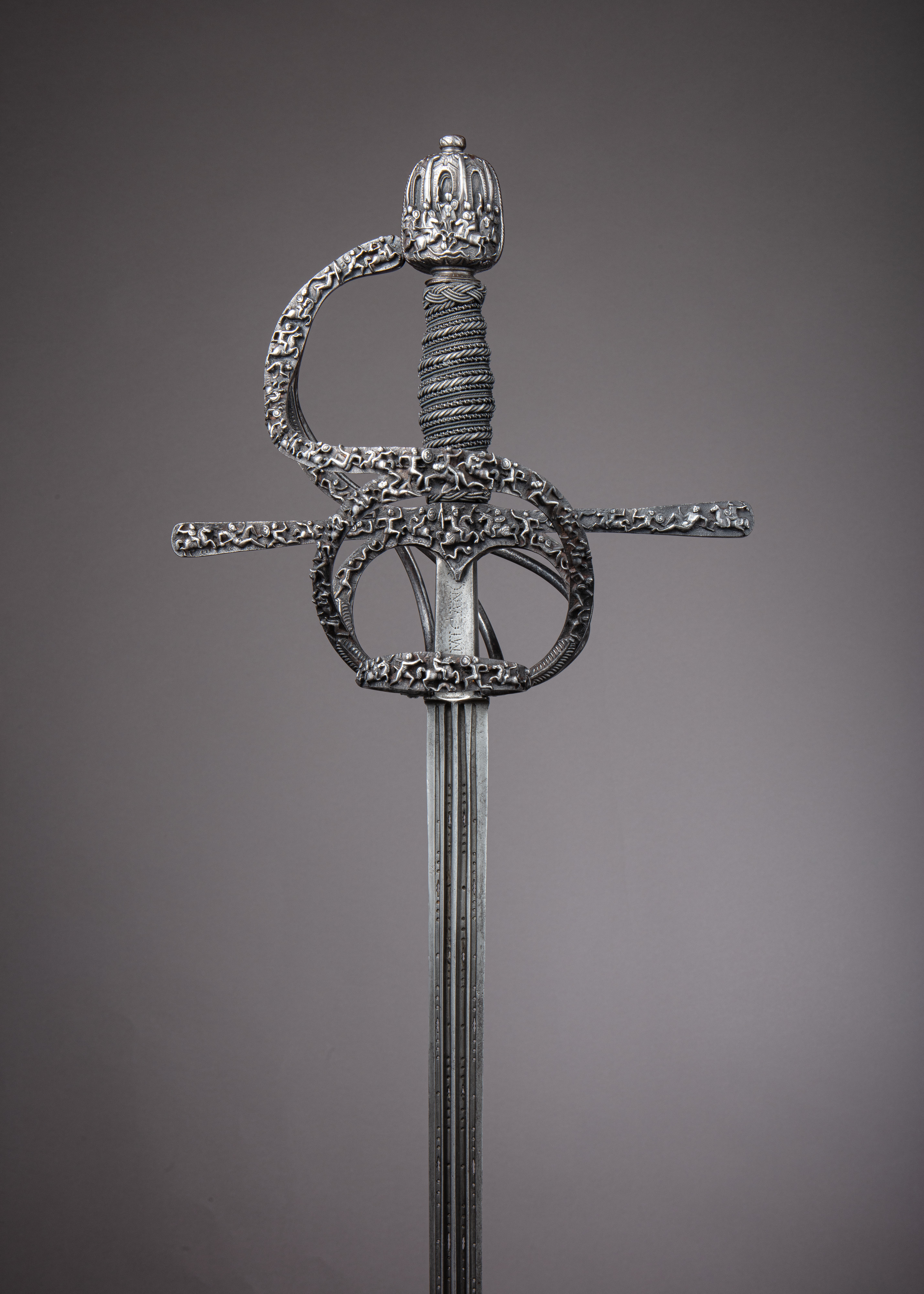Rapier
Bladesmith Pietro de Formicano Italian
The hilt is of blackened iron and consists of an ovoid pommel surmounted by a flattened button, a knuckle guard, two quillons slightly expanding toward rounded tips, arms of the hilt, and two side rings, the upper one connected to the knuckle guard by a short diagonal branch. The wooden grip of oval section is bound with twisted and braided iron wire. The branches of the guard are chiseled in high relief with a multitude of tiny battling warriors, forty-two on horseback and forty-four on foot, some of them dressed in Roman armor, others nude. In some areas faint landscape details are present in the background behind the figures and judging from the traces of gold that remain, the entire background was apparently once gilt. The pommel is chiseled with cavalry and infantry figures against a monumental architectural background of columns and arches. Large stylized acanthus leaves decorate the bases of the arms and side rings, and the backs of the knuckle guard, quillons, and arms are chiseled with stylized fruit and foliage. The inner guard, formed of three branches of circular section, is plain.
The double-edged blade of diamond-shaped section is chiseled on each side with four deep grooves extending almost to the tip. These grooves are pierced with holes and slits in a decorative repeat pattern. The flat ricasso of rectangular section is inscribed on the inner side PIETRO DE, and on the outer side FORMICANO, in decoratively engraved letters. On the narrow front edge of the ricasso is a partially obliterated mark, a rectangle enclosing what appears to be a complex monogram formed of the letters F.G.D.T. and surmounted by the crown of the grand dukes of Tuscany.
The hilt of this rapier is one of a conspicuous group of late sixteenth- and early seventeenth-century hilts chiseled with numerous minute figures on the pommels and guards. Some of the finest examples are preserved in the former Royal Saxon Armory (now the Staatliche Kunstsammlungen) in Dresden, where they are called Italian. In the absence of any documentation to support this attribution, it may be pointed out to the contrary that the stylized foliage on the rear of the guards is very similar to motifs found on German swords, particularly one made by the iron-chiseler Othmar Wetter in Dresden in the last decade of the sixteenth century (Staatliche Kunstsammlungen, formerly inv. no. E.228). A German––and possibly Saxon––attribution is thus suggested here for this hilt.
The inscription on the ricasso of the blade refers to Pietro de Formicano, one of the famous bladesmiths working in Belluno, north of Venice, at the turn of the seventeenth century. A sword from the Odescalchi Collection, now in the Palazzo Venezia, Rome, has a blade inscribed with this smith's name in almost identical lettering, and bears the date 1603. The crowned monogram on the ricasso has been identified by Boccia and Coelho (see bibliography) as the ownership mark of Ferdinando de' Medici, Grand Duke of Tuscany (reigned 1621–70), which is also found on other arms from the former Medici armory now preserved in the Bargello, Florence. This sword, or at least its blade, apparently once formed part of the famous Medici armory which was housed in the Uffizi until its dispersal in the 1780s.
Due to rights restrictions, this image cannot be enlarged, viewed at full screen, or downloaded.
This artwork is meant to be viewed from right to left. Scroll left to view more.


